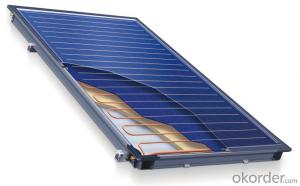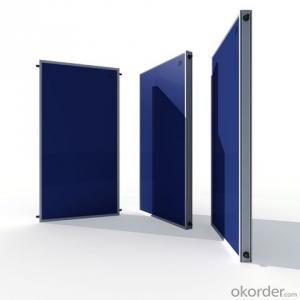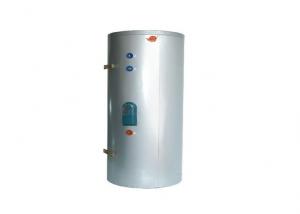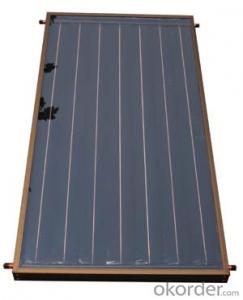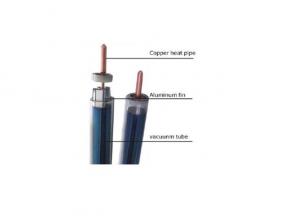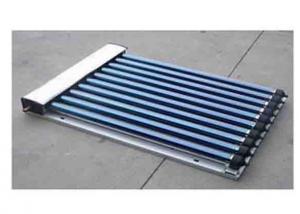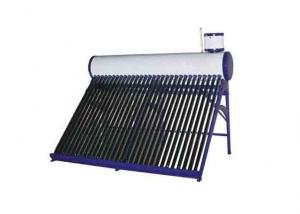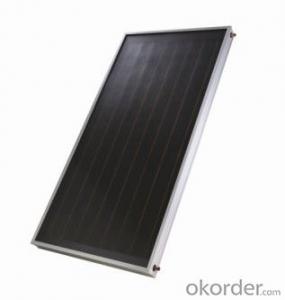PHNIX flat plate solar thermal collectors with Germany absorber
- Loading Port:
- Shanghai
- Payment Terms:
- TT OR LC
- Min Order Qty:
- 500 pc
- Supply Capability:
- 10000 pc/month
OKorder Service Pledge
OKorder Financial Service
You Might Also Like
Specifications
PHNIX flat plate solar thermal collectors with Germany absorber
1.ODM&OEM
2.Absorber:eta plus-Cu from Germany
3.Solar keymark
PHNIX flat plate solar thermal collectors with Germany absorber
It consists of
Flat-plate copper absorber of solar energy : Germany eta plus-Cu
Absorber coating : Highly selective vacuum coating
Heat transfer medium : Polypropylene glycol/water mixture
Insulating layer : Glass wool with great thermostability
Heat transfer medium tube : Copper tube
Outer casing : Aluminum alloy
How does flat plate solar thermal collectors work?
Sunlight passes through the glazing and strikes the absorber plate, which heats up, changing solar energy into heat energy. The heat is transferred to liquid passing through pipes attached to the absorber plate.
Absorber plates are commonly painted with "selective coatings," which absorb and retain heat better than ordinary black paint. Absorber plates are usually made of metal—typically copper or aluminum—because the metal is a good heat conductor. Copper is more expensive, but is a better conductor and less prone to corrosion than aluminum. And our flat plate solar thermal collectors are made of high performance copper absorber.
In locations with average available solar energy, flat plate collectors are sized approximately one-half- to one-square foot per gallon of one-day's hot water use.
Applications
The main use of this technology is in residential buildings where the demand for hot water has a large impact on energy bills. This generally means a situation with a large family, or a situation in which the hot water demand is excessive due to frequent laundry washing. Commercial applications include laundromats, car washes, military laundry facilities and eating establishments. The technology can also be used for space heating if the building is located off-grid or if utility power is subject to frequent outages. Solar water heating systems are most likely to be cost effective for facilities with water heating systems that are expensive to operate, or with operations such as laundries or kitchens that require large quantities of hot water.
Unglazed liquid collectors are commonly used to heat water for swimming pools. Because these collectors need not withstand high temperatures, they can use less expensive materials such as plastic or rubber. They also do not require freeze-proofing because swimming pools are generally used only in warm weather or can be drained easily during cold weather.
While solar collectors are most cost-effective in sunny, temperate areas, they can be cost effective virtually anywhere in the country so should be considered.
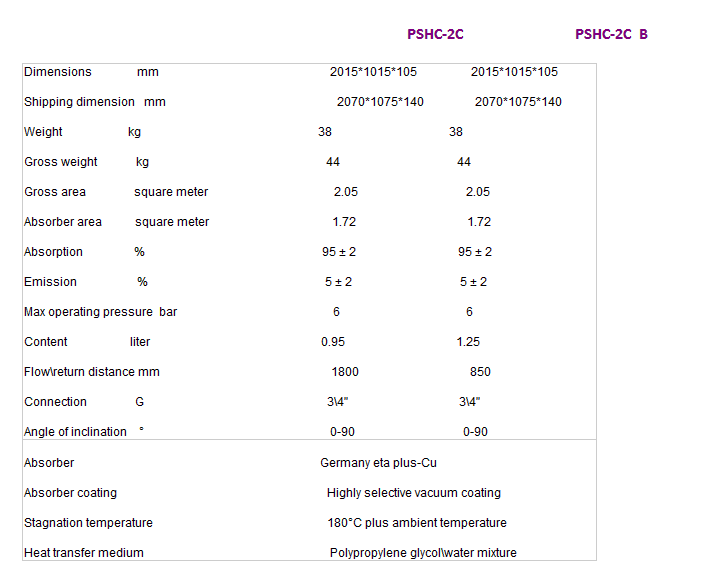
- Q:How do solar collectors perform in areas with high levels of airborne debris?
- Solar collectors may not perform optimally in areas with high levels of airborne debris. The debris, such as dust, leaves, or pollen, can accumulate on the surface of the collectors and block sunlight, reducing their efficiency. Regular cleaning and maintenance are essential to ensure the collectors continue to operate at their full potential in such areas.
- Q:How do solar collectors affect property value?
- Solar collectors can have a positive impact on property value. Installing solar collectors on a property can increase its attractiveness to potential buyers, as it demonstrates the homeowner's commitment to sustainability and renewable energy. Solar collectors provide a source of clean and renewable energy, which can lead to reduced energy costs for the homeowner. This financial benefit can also be appealing to potential buyers, as it can result in long-term savings on utility bills. Additionally, solar collectors may also qualify for various government incentives and tax credits, which can further enhance the property's value. Overall, the presence of solar collectors on a property can enhance its desirability and marketability, potentially increasing its value.
- Q:Can solar collectors be used in geothermal power plants?
- No, solar collectors cannot be used in geothermal power plants. Geothermal power plants harness the heat energy from the Earth's interior, while solar collectors capture energy from the sun. These are two distinct and separate methods of generating power, and cannot be combined in the same facility.
- Q:How do solar collectors perform in areas with limited sunlight?
- Solar collectors perform less efficiently in areas with limited sunlight. The amount of sunlight directly affects the amount of energy that can be captured by solar collectors. In areas with limited sunlight, the solar collectors may not be able to generate as much electricity or heat as they would in areas with abundant sunlight. However, advancements in solar technology have made it possible for solar collectors to still be viable in areas with limited sunlight, although their performance may be reduced compared to areas with more sunlight.
- Q:How do solar collectors compare to traditional heating systems in terms of efficiency?
- Solar collectors are generally more efficient than traditional heating systems because they utilize renewable energy from the sun to generate heat. Traditional heating systems, on the other hand, rely on fossil fuels or electricity, which can be less efficient and have a higher environmental impact.
- Q:Can solar collectors be used for heating mosques?
- Yes, solar collectors can be used for heating mosques. Solar collectors, such as solar thermal systems or solar panels, can harness sunlight to produce heat and provide a renewable energy source for heating purposes. By installing solar collectors on the rooftops or nearby areas of mosques, the captured solar energy can be used to heat the building, reducing the reliance on traditional fossil fuel-based heating systems. This can contribute to the mosque's sustainability and environmentally-friendly practices while reducing energy costs.
- Q:How do solar collectors compare to other renewable energy sources?
- Solar collectors have several advantages over other renewable energy sources. Firstly, solar energy is abundant and freely available, unlike wind or hydroelectric power which depend on specific geographic conditions. Additionally, solar collectors have a smaller environmental footprint compared to sources like biomass or geothermal energy. Solar collectors are also highly scalable and can be easily installed on rooftops or in large solar farms, making them accessible to both individuals and utility-scale projects. Lastly, solar energy is reliable and can be stored for later use, providing a consistent and uninterrupted power supply. Overall, solar collectors offer a versatile and sustainable solution for meeting our energy needs.
- Q:Can solar collectors be used in areas with limited access to certification bodies?
- Yes, solar collectors can be used in areas with limited access to certification bodies. While certification bodies can provide verification of product quality and compliance with industry standards, their presence is not a requirement for the installation or operation of solar collectors. In such areas, alternative methods like self-assessment or relying on reputable manufacturers can be used to ensure the reliability and performance of the solar collectors. Additionally, local consultations with experts or experienced installers can provide valuable guidance for the successful implementation of solar collector systems in these regions.
- Q:Can solar collectors be used for heating paper mills?
- Yes, solar collectors can be used for heating paper mills. Solar thermal systems can provide heat for various industrial processes, including paper production. By harnessing the sun's energy, solar collectors can generate heat that can be used to meet the high temperature requirements of paper mills, reducing the reliance on fossil fuels and lowering carbon emissions.
- Q:Can solar collectors be used in waste management facilities?
- Yes, solar collectors can be used in waste management facilities. Solar energy can be harnessed by collectors to generate electricity or heat, which can be utilized in waste management processes such as powering equipment or facilities, heating water for waste treatment, or even converting waste into energy through advanced technologies like anaerobic digestion or thermal gasification. This helps to reduce the reliance on traditional energy sources, decrease greenhouse gas emissions, and promote sustainable waste management practices.
1. Manufacturer Overview |
|
|---|---|
| Location | |
| Year Established | |
| Annual Output Value | |
| Main Markets | |
| Company Certifications | |
2. Manufacturer Certificates |
|
|---|---|
| a) Certification Name | |
| Range | |
| Reference | |
| Validity Period | |
3. Manufacturer Capability |
|
|---|---|
| a)Trade Capacity | |
| Nearest Port | |
| Export Percentage | |
| No.of Employees in Trade Department | |
| Language Spoken: | |
| b)Factory Information | |
| Factory Size: | |
| No. of Production Lines | |
| Contract Manufacturing | |
| Product Price Range | |
Send your message to us
PHNIX flat plate solar thermal collectors with Germany absorber
- Loading Port:
- Shanghai
- Payment Terms:
- TT OR LC
- Min Order Qty:
- 500 pc
- Supply Capability:
- 10000 pc/month
OKorder Service Pledge
OKorder Financial Service
Similar products
New products
Hot products
Hot Searches
Related keywords
